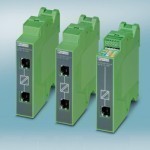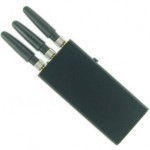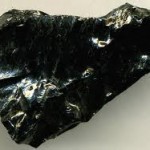FCAPS is an ITU standard model for enterprise management. The five FCAPS domains are: Fault Management Configuration Management Accounting Management Performance Management Security Management Fault Management Fault management is the domain where network problems are discovered and corrected. Steps are then taken to prevent them from occurring or recurring. By doing so, the network remains operational and downtime is minimized. Configuration Management Configuration management is where daily operations are monitored and controlled. All hardware and programming changes are coordinated. In addition, new programs, new equipment, modification of existing systems and Read More
How to Use an IDE Cable

An Integrated Drive Electronics (IDE) cable is one of the most used standard electronic interface cables that connects a motherboard’s data bus with storage media. The interface’s design is based on the IMB Industry Standard Architecture (ISA) 16-bit bus standard that was approved in 1990, and it has since been expanded to be used on motherboards that use other bus standards. The IDE standard has since been updated with the Enhanced Integrated Drive Electronics (EIDE) connection design and is often built into a motherboard as well. The next generation of Read More
RTV Silicone
Room Temperature Vulcanizing (RTV) silicone is a rubber polymer used to create molds, prototypes, and sealant. It is extremely flexible and quite tear resistant. It is made up of two separate components: a base and a curative. RTV silicone can be poured, sprayed, brushed, or pumped onto a surface. Either moisture or heat dries it, depending on the specific product. How RTV Silicone is Made RTV silicone is made through a process known as vulcanization. This process involves mixing rubber polymers with additives such as sulfur in order to make Read More
How to Change an Exchange Password
To change a Microsoft Exchange password, follow these instructions: Press the [CTRL], [ALT], and [DELETE] keys at the same time. In the window that pops up, click the Change Password button Enter a User name Select the domain that the password is being changed for Enter the old password Enter the new password Enter the new password again Click the OK button A box that says “Your password has been changed” will pop up. Changing the Microsoft Exchange password will only change the password in the mail server. It will Read More
Retrograde Orbit

A retrograde orbit is an orbit where the satellite travels in an East to West direction instead of the common West to East orbit. The normal West to East orbits are known as prograde orbits. Retrograde orbits are uncommon due to the much higher velocities necessary for successful launch and the associated higher costs. During a prograde launch, rotational velocity of the Earth is added to the velocity of the launch rocket. In a retrograde launch, the rotational velocity of the Earth is subtracted from the velocity of the launch Read More
Ethernet Isolator

An Ethernet or network isolator is a type of galvanic isolator used in copper-based Ethernet systems. It protects devices and users from possible differences in ground potentials of the voltages in two or more different circuits or circuit components. Ethernet isolators depend on electromagnetic induction to bridge a physical isolation gap within Ethernet systems and do not require any external power supply other than the energy being transferred across the Ethernet cable itself. How Ethernet Isolators Work An Ethernet isolator separates the electrical currents of multiple devices, circuits, or circuit Read More
Cell Phone Jammer

With so many people using cell phones these days, one of the devices that have popped- up on the market are cell phone jammers. Be advised that cell phone jammers are usually black market devices, since using them is illegal in most municipalities. However, for those that are tired of hearing endless cell phone conversations or constantly being interrupted by incessant cell phone ring tones, a cell phone jammer seems like the perfect device to own. How Cell Phone Jammers Work Cell phone jammers work in a similar way to Read More
Understanding Organizational Units
An organizational unit (OU) is a container that logically organizes and groups Active Directory objects within domains. OUs are not part of the DNS namespace. They organize Active Directory objects into logical administrative groups. OUs therefore serve as containers in which users can create and manage Active Directory objects. OUs are considered the smallest unit to which an Administrator can assign permissions to resources within Active Directory. An OU enables users to apply security policies, deploy applications, delegate administrative control for Active Directory objects, and run scripts. An important thing Read More
Who Invented the Radio?
Radio was not invented by any single person, but instead was a culmination of several scientists’ research, each of whom pioneered a different area of electromagnetic radiation and radio waves during the late 1800s and early 1900s. Among these men are well known researchers such as Heinrich Rudolf Hertz, James Clerk Maxwell, David E. Hughes, Thomas Edison, and Nikola Tesla. The Role of James Clerk Maxwell In order to fully understand the invention of radio, we must go back to an earlier point in time when electromagnetism was first discovered. Read More
What is Anthracite Coal?

Anthracite coal is a form of coal that is almost made entirely of carbon. Anthracite coal is much harder than other forms of coal such as bituminous, and is usually found in areas surrounding mountains or deep valleys. Anthracite burns much cleaner than other forms of coal due to its low pollutant content. In fact, anthracite may contain 91% to 98% pure carbon, leaving only 2% to 9% of other elements. Anthracite coal is difficult to ignite and burns with a blue, smokeless flame. Where does Anthracite Coal Come from? Read More


Share on: